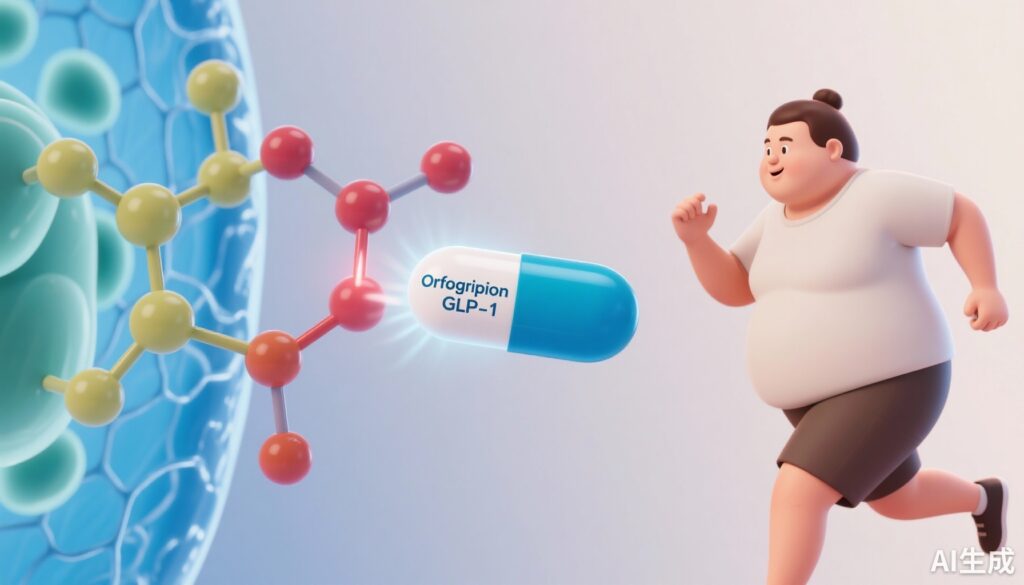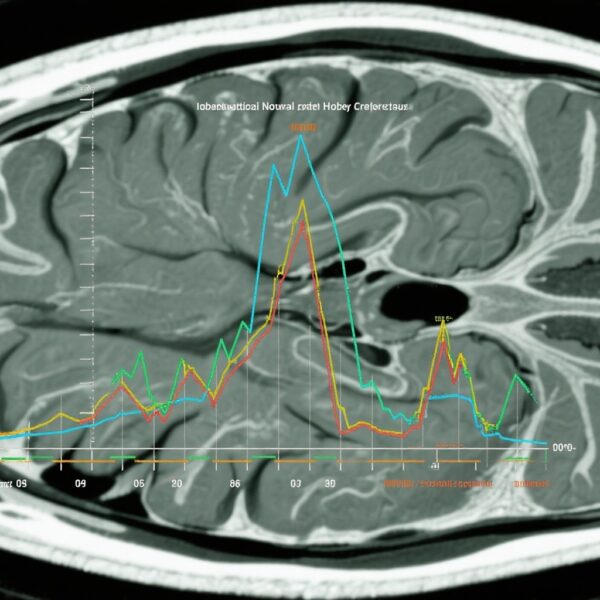Study Background and Disease Burden
Obesity represents a major global health challenge, significantly increasing morbidity and mortality by elevating the risk for cardiovascular disease, type 2 diabetes mellitus, and certain cancers. Despite lifestyle interventions such as diet and physical activity being foundational to obesity management, sustained weight reduction is often difficult to achieve. Pharmacologic options, including glucagon-like peptide-1 (GLP-1) receptor agonists, have emerged as effective treatments. These agents leverage the incretin pathway to reduce appetite and improve metabolic parameters. However, most currently available GLP-1 receptor agonists are peptide-based and require subcutaneous injection, which may limit their acceptance and adherence among patients. Orforglipron is a small-molecule, nonpeptide oral GLP-1 receptor agonist developed to address these limitations, potentially expanding therapeutic accessibility and compliance for obesity management.
Study Design
The ATTAIN-1 trial was a multinational, randomized, double-blind, placebo-controlled phase 3 study designed to evaluate the efficacy and safety of orforglipron in adults with obesity but without diabetes mellitus. A total of 3127 participants were randomized in a 3:3:3:4 ratio to receive once-daily oral orforglipron at either 6 mg, 12 mg, or 36 mg doses or matched placebo. All participants were encouraged to adhere to a healthy diet and physical activity regimen over a treatment period of 72 weeks. The primary endpoint was the percent change in body weight from baseline to week 72, measured according to the treatment-regimen estimand in the intention-to-treat population. Secondary endpoints included categorical weight loss thresholds, changes in waist circumference, blood pressure, lipid profile, and safety assessments.
Key Findings
Orforglipron demonstrated dose-dependent, clinically meaningful reductions in body weight compared with placebo. At 72 weeks, the mean percent weight loss was -7.5% (95% CI, -8.2 to -6.8) for the 6 mg dose, -8.4% (95% CI, -9.1 to -7.7) for the 12 mg dose, and -11.2% (95% CI, -12.0 to -10.4) for the 36 mg dose versus -2.1% (95% CI, -2.8 to -1.4) in the placebo group, with all comparisons achieving statistical significance (P < 0.001). Importantly, in the highest dose group, over half (54.6%) of patients achieved at least 10% weight reduction, 36.0% achieved 15% or greater, and 18.4% attained 20% or more, in contrast to significantly lower proportions (12.9%, 5.9%, and 2.8%, respectively) in the placebo group.
Additional metabolic benefits were noted, including statistically significant improvements in waist circumference, systolic blood pressure, triglycerides, and non-HDL cholesterol levels compared with placebo. These outcomes further underscore the favorable cardiometabolic impact of orforglipron that is consistent with other GLP-1 receptor agonists.
Regarding safety, adverse events leading to treatment discontinuation were more common in the orforglipron groups (ranging from 5.3% to 10.3%) compared to placebo (2.7%). The most frequently reported adverse events were gastrointestinal in nature (e.g., nausea, vomiting, diarrhea), generally mild to moderate, mirroring the known side-effect profile of GLP-1 receptor agonists. No unexpected safety signals emerged during the 72-week duration.
Expert Commentary
The ATTAIN-1 trial provides compelling evidence that orforglipron, as an orally administered small-molecule GLP-1 receptor agonist, offers robust and durable weight loss in adults with obesity lacking diabetes. This represents a significant advancement over injectable GLP-1 agents by simplifying administration and potentially improving patient adherence. The magnitude of weight loss, particularly at the 36 mg dose, approaches that seen with peptides like semaglutide but without the need for injections.
Mechanistically, orforglipron mimics endogenous GLP-1 activity to reduce appetite, slow gastric emptying, and enhance satiety—key pathways mediating its anti-obesity effects. The metabolic improvements observed suggest beneficial downstream effects on cardiovascular risk factors.
However, several considerations remain. The generalizability of findings beyond a 72-week horizon requires longer-term studies to evaluate sustained efficacy and safety. The exclusion of patients with diabetes limits initial applicability but sets the stage for further investigations in this population. Additionally, while gastrointestinal side effects were mostly mild to moderate, management strategies and patient counseling will be critical to optimize tolerability.
The trial design was rigorous with a large sample size and well-defined endpoints, strengthening confidence in results. Yet, head-to-head comparisons with other obesity pharmacotherapies would help delineate relative efficacy and guide clinical decision-making. Given its oral formulation, orforglipron could fill a niche for patients reluctant to use injectable agents or who experience injection-site reactions.
Conclusion
Orforglipron emerges as a promising new oral pharmacotherapy for obesity, demonstrating significant and sustained weight loss alongside improvements in cardiometabolic parameters over 72 weeks. Its safety profile aligns with that of established GLP-1 receptor agonists, predominantly featuring mild to moderate gastrointestinal adverse effects. The availability of an effective oral GLP-1 receptor agonist has the potential to transform obesity treatment paradigms by enhancing patient adherence and expanding therapeutic options.
Future research should focus on evaluating long-term outcomes, effectiveness in diverse patient populations including those with type 2 diabetes, and comparative effectiveness against existing treatments. Integration of orforglipron into clinical practice would complement lifestyle modification efforts, addressing the substantial unmet need in obesity management.



